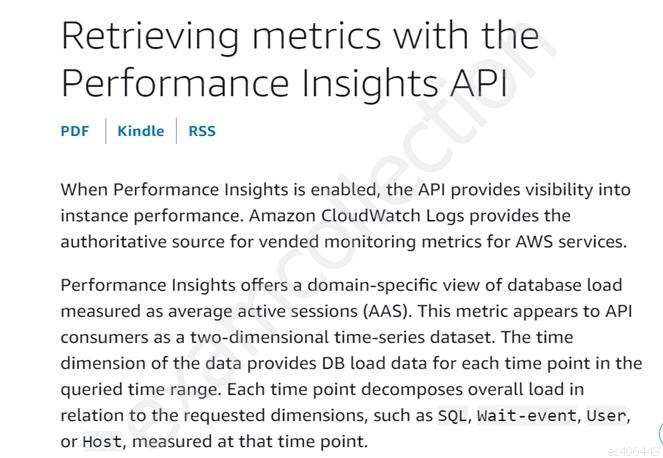An ecommerce company is migrating its core application database to Amazon Aurora MySQL. The company is currently performing online transaction processing (OLTP) stress testing with concurrent database sessions. During the first round of tests, a database specialist noticed slow performance for some specific write operations.
Reviewing Amazon CloudWatch metrics for the Aurora DB cluster showed 90% CPU utilization.
Which steps should the database specialist take to MOST effectively identify the root cause of high CPU utilization and slow performance? (Choose two.)
A. Enable Enhanced Monitoring at less than 30 seconds of granularity to review the operating system metrics before the next round of tests.
B. Review the VolumeBytesUsed metric in CloudWatch to see if there is a spike in write I/O.
C. Review Amazon RDS Performance Insights to identify the top SQL statements and wait events.
D. Review Amazon RDS API calls in AWS CloudTrail to identify long-running queries.
E. Enable Advance Auditing to log QUERY events in Amazon CloudWatch before the next round of tests.
Reviewing Amazon CloudWatch metrics for the Aurora DB cluster showed 90% CPU utilization.
Which steps should the database specialist take to MOST effectively identify the root cause of high CPU utilization and slow performance? (Choose two.)
A. Enable Enhanced Monitoring at less than 30 seconds of granularity to review the operating system metrics before the next round of tests.
B. Review the VolumeBytesUsed metric in CloudWatch to see if there is a spike in write I/O.
C. Review Amazon RDS Performance Insights to identify the top SQL statements and wait events.
D. Review Amazon RDS API calls in AWS CloudTrail to identify long-running queries.
E. Enable Advance Auditing to log QUERY events in Amazon CloudWatch before the next round of tests.
